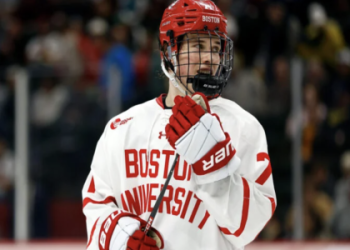In the pursuit of building the ultimate community basketball roster, teams often face the thrilling yet daunting challenge of selecting the best players. Whether it’s a neighborhood pick-up game or a more formal league, every player brings unique strengths and weaknesses. Recently, a local community team pulled off an unexpected victory in a regional tournament, showcasing both remarkable talent and the importance of strategic team makeup.
Critical moments defined the game. The team, predominantly made up of amateur players, found themselves down by 15 points at halftime. However, a spirited halftime talk from coach Mike Johnson ignited a fire within the team. “We believed we could turn it around,” said shooting guard Tommy Lee, whose three-point shooting proved pivotal in the second half. His exceptional perimeter shooting not only boosted the team’s morale but also shrunk the opponent’s lead.
As the game progressed, the community team employed a fast-paced strategy. They exploited the speed and agility of their point guard, Sarah Kim. Known for her ability to navigate defenses, she orchestrated fast breaks that caught the opponents off-guard. “Every time I saw an opening, I took it,” said Kim. Her vision on the court transformed potential turnovers into scoring opportunities. Furthermore, her adept ability to assist players like Lee and center Ben Davis added a layer of complexity to their offense.
Building Chemistry and Understanding
Moreover, effective communication played a vital role throughout the match. Players frequently encouraged each other, creating a supportive environment that fueled their comeback. “Even when we were down, I felt the energy shift,” Lee remarked. This chemistry, built through countless hours of practice, emphasized that skill alone cannot define a winning team; a cohesive unit often triumphs over individual talent.
Additionally, each player brought their own history to the game, further complicating the dynamics of their roster. For instance, Davis, a former college athlete, had slumped over the years but still possessed the fundamentals. His rebounding ability and defensive skills were indispensable. “I may not move as fast, but I know where to be,” Davis stated confidently after anchoring the defense in the critical moments of the game.
The environment on the court cannot be underestimated either. Playing on an outdoor court with subpar conditions tested the players’ adaptability. The wind made shooting and passing unpredictable. However, the community team’s familiarity with their local setting became an advantage. They knew where to position themselves for optimal rebounds and understood how to use the court layout to outmaneuver their opponents. “We embraced the challenge,” said Johnson, reflecting on how they turned the terrain to their favor.
As the clock wound down, the players displayed remarkable composure. The opposing team struggled to withstand the relentless drive of Kim’s playmaking and Lee’s precision shooting. Their victory not only highlighted individual talents but also reinforced the strategic importance of rounding out a diverse roster. “It’s about balancing skill sets, personality, and understanding,” Johnson concluded, emphasizing how vital it is to create a community of trust and respect.
Reflecting on their journey, the team members expressed a profound sense of pride. The combination of hard work, emotional support, and strategic thinking led them to a legendary comeback. “This win means everything. It’s not just about the trophy; it’s about us growing together,” Davis said, encapsulating the spirit of community basketball.
To foster a successful community basketball roster, teams should prioritize a diverse blend of skills, communication, and shared experiences. The importance of evaluating players not just on their athletic ability but their compatibility with the team’s culture is crucial. Now, we turn the question to you: what qualities do you think are essential in building a winning community basketball team? Share your thoughts in the comments below!















